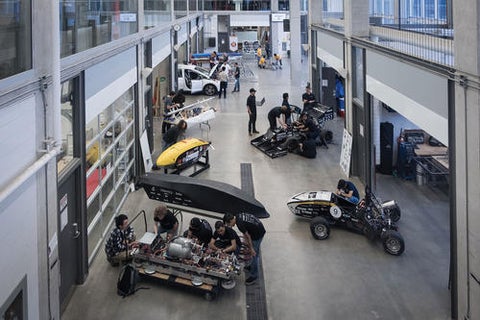In fall 2017, the Engineering Planning Committee (EPC) began the strategic planning process by considering the value proposition, competitive advantages, and key activities of the Faculty of Engineering. During these in-depth discussions, strategic priorities were determined and our Academic and Administrative units launched their individual self-study processes.
This self-study process was the opportunity to comprehensively reflect on their unit’s performance measured against the previous strategic plan as well as considering their unit’s strengths and weaknesses. Each unit was then asked to strike a planning committee that was required to include faculty, staff, and students. Each of these committees was given the freedom to implement the self-study process in a way that made the most sense for their unit; this included workshops, subcommittees, and surveys. Once finalized, each self-study document was presented to the EPC – allowing for full knowledge sharing across the Faculty.

On July 19, 2019, the Faculty-level goals were approved and are presented here in theFaculty of Engineering Strategic Plan 2020-2025 (PDF).
PUBLICATION DATE: 1 NOV 2019
Simultaneously, the Faculty of Engineering undertook a broad student survey with undergraduate and graduate students surveyed separately. Survey questions were developed in consultation with the Waterloo Engineering Society (ENGSOC), Waterloo Architecture Student Association (WASA), Society of Waterloo Architecture Graduates (SWAG) and every Graduate Student Association (GSA) president. In all, 1,275 undergraduate students and 418 graduate students responded to the survey, representing a 16.3 per cent and 20 per cent response rate respectively. The data from the student surveys was analyzed extensively and referenced throughout the self-study submissions.
Following the self-study process, EPC revisited the vision and aspiration statements – ensuring the consultations were accurately reflected in the final version. The vision and aspirations statements guided the development of the goals. With the finalized direction, the units were once again asked to work within their planning committees to develop goals for their individual areas. The goal submission documents were collated and synthesized at the faculty level to determine commonalities and consistent themes. It was through this process that the Faculty-level goals were developed. The faculty’s Director of Planning met with each Director, Chair, and Associate Dean to describe how their goals strengthened the Faculty goals. This ensured clarity, consensus, and understanding for everyone involved.